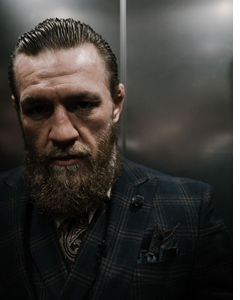Conor McGregor, Fixed Fights and Fake Headlines
The general public would be stunned to discover exactly how many fights are fixed in the combat sports entertainment industry. Generally something assumed to be primarily relegated to the confines of professional wrestling, with the steady stream of the weird, strange and out of the ordinary occurring in mixed martial arts on a practically weekly basis anymore it has become painfully obvious to those in the know that the athletes and promoters are looking to cash in at the public's expense. As the increasing mainstream popularity of gladiatorial combat catches on with the general public, the boxing and mixed martial artis industries are working overtime to explore all possible angles in the fight fixing game en route to ensuring they receive the most profitable outcomes for their advertising and broadcast partners.
 The average fan and spectator would find it most difficult to discern between athletes going through the motions and those actively looking to enforce their will on another human being. Differing little in terms of Hollywood theatrical displays versus those of real life, the best fight fixers can make the audience believe what they are seeing is real in much the same way a good actor can move an audience to tears. And among the most difficult concepts for even seasoned fight fans to accept is the idea that athletes would actively volunteer to lose via violent and often times devastating fashion in order to appease the mixed martial arts gods.
The average fan and spectator would find it most difficult to discern between athletes going through the motions and those actively looking to enforce their will on another human being. Differing little in terms of Hollywood theatrical displays versus those of real life, the best fight fixers can make the audience believe what they are seeing is real in much the same way a good actor can move an audience to tears. And among the most difficult concepts for even seasoned fight fans to accept is the idea that athletes would actively volunteer to lose via violent and often times devastating fashion in order to appease the mixed martial arts gods.
“You fix fights by colluding with the fighters, generally the loser. It’s almost always the loser,” explains former boxing manager Charles Farrell in the 2016 documentary, “Dirty Games – The Dark Side of Sports.” According to Farrell, who managed many professional boxers including former heavyweight champion Leon Spinks, “Winners almost never know that the fight is fixed. One of the things that you’re cognizant of when you are fixing fights is that you’re doing something illegal, something that theoretically can wind you up, you know, wind you in jail and get people angry at you. So you never really say anything, nothing that’s culpable."
With the idea in mind that you're doing something illegal when involved in the fight fixing world, obviously it becomes necessary to make the fight look as realistic as possible in order to avoid raising suspicions. This is where the idea of professional fighters taking actual shots comes into play, because without an element of realism involved fight experts with the ability to think for themselves will begin to question whether the contests were authentic?
Recently, UFC playboy Conor McGregor made headlines once again for all the wrong reasons by allegedly assaulting an Italian DJ in what has become the latest incident in an alarming string of violent physical encounters for the sports biggest star.
“My biggest problem with the whole part of the story,” explained ESPN analyst Chael Sonnen in his October 9, 2021, YouTube video titled, ‘Conor McGregor Accused of Breaking Italian DJ’s nose…,’ was that this dude was talking to TMZ the next day. It’s the only part that makes me think, well, maybe this didn’t happen?"
Laying his case out for the general public like the great Perry Mason, according to Bad Guy Inc., "So you’ve got a grown ass man with kids at home at a club, that’s a problem for me,” explained Sonnen. “You have a grown ass man with kids at home, on crutches, at a club, that’s a problem for me. You’ve got a grown ass man, kids at home bit, the crutches, the hobbling around, gets in a dust up with a DJ and throws heat at the guy. And then the guy is on TMZ the next day, at least allegedly."
“I watched Conor McGregor hit Floyd Mayweather and I saw the reaction, continued Sonnen. “I watched Conor McGregor hit the greatest featherweight of all-time named Jose Aldo and I saw what happened. I watched Conor McGregor hit one of the great fighters of all-time in Eddie Alvarez and I saw what happened. Why isn’t that happening to Machine Gun Kelly, the old man and this DJ? How come all of a sudden, these guys can take Conor’s punch? I mean, right, the whole thing really does stem other questions.”
With only so many possibilities left to explore in explaining away this curious phenomenon, one is forced to evaluate whether Conor McGregor has in fact lost all of his punching power, an unlikely scenario considering power is often times considered the last thing a fighter loses when they’re on the tail end of their careers, or if McGregor is manufacturing these events in order to keep his name in the headlines as Sonnen suggests? The only other possibility left to explore, however remote, is the idea that McGregor’s fights were fixed in order to capitalize on his inherent star power while continuing to break into the European market.
Whatever the case may be, it’s clear that win, lose or draw McGregor remains a draw despite the negative press. Which may in fact be one of the secret ingredients to his success – the ability to keep his name in the headlines with his next the outlandish, devilish act. Unfortunately, when we’ve moved beyond merely suspecting the fights are fixed, but the front-page stories themselves, we’ve either entered into Jedi level marketing territory or we've inched far too close to the world of professional wrestling for our own good. With a huge emphasis on the entertainment aspect of the combat sports entertainment industry, the general public would be shocked to learn exactly how many fights are fixed in professional boxing and mixed martial arts.





